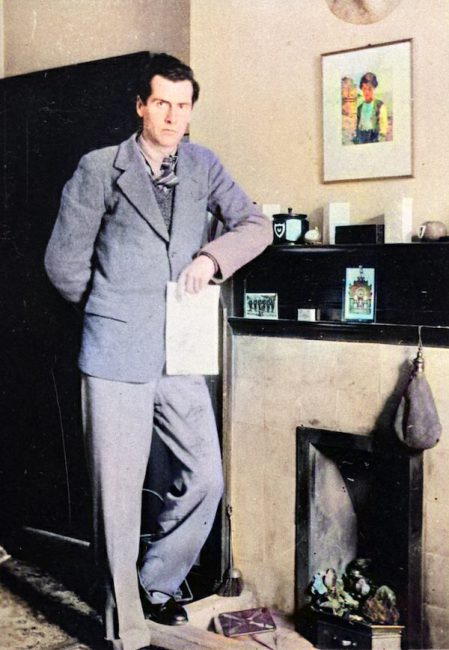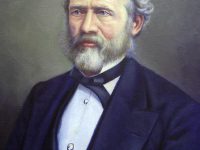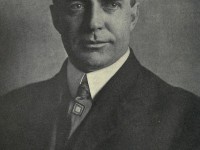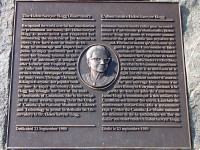
Marshall McLuhan (1911-1980)
On July 21, 1911, Canadian philosopher of communication theory Herbert Marshall McLuhan was born. His groundbreaking work is considered to be the cornerstone of media and communication theory. McLuhan is known for coining the expressions the medium is the message and the global village, and for predicting the World Wide Web almost thirty years before it was invented.
“In television, images are projected at you. You are the screen. The images wrap around you. You are the vanishing point.” (Marshall McLuhan)
Marshall McLuhan – Youth and Education
Marshall McLuhan was born in Edmonton, Canada. His father Herbert Ernest McLuhan was an insurance salesman and mother Elsie Naomi an elocution teacher. In 1933 McLuhan obtained a Bachelor of Arts degree, winning a University Gold Medal in Arts and Sciences. In 1934 he obtained a Master of Arts degree in English Studies after studying mechanical engineering for a year. After applying in vain for a Rhodes Fellowship to Oxford University, he was able to fulfill his wish to study in England at Cambridge University. There he was required to complete a bachelor’s degree within four years before he could begin doctoral studies. On August 4, 1939, McLuhan married Corinne Lewis, a teacher from Fort Worth and a budding actress whom he had met in St. Louis. From 1939 to 1940, they lived in Cambridge, where McLuhan was awarded a master’s degree in January 1940 and worked on his dissertation for the doctorate about Elizabethanian playwright and author Thomas Nashe.
“Media are means of extending and enlarging our organic sense lives into our environment.” (Marshall McLuhan)
Media as the Primary Shaper of Civilization
McLuhan then taught English in various American Universities. Along the way he married Corinne Keller Lewis, a drama student at the University of St. Louis, and converted to Catholicism. He eventually settled at the University of Toronto where he would later establish his Centre for Culture and Technology, which became a think tank studying the psychological and social consequences of technologies and media. It was here that he met political economist Harold Innis and Anthropologist Edmund Carpenter who would both influence him to formulate a concept of media as a primary shaper of civilization.
“Advertising is the greatest art form of the twentieth century.” (Marshall McLuhan)
The Gutenberg Galaxy
McLuhan’s The Gutenberg Galaxy appeared in 1962, followed by The Making of Typographic Man in 1962, Understanding Media in 1964 and The Medium is the Message in 1967 and War and Peace in the Global Village in 1968. Let’s take just Understanding Media, first published in 1964, as an example for his theories: Understanding Media focuses on the media effects that permeate society and culture, but McLuhan’s starting point is always the individual, because he defines media as technological extensions of the physical body. As a result, McLuhan often puts his inquiry and his conclusions in terms of the ratio between the physical senses (the extent to which we depend on them relative to each other) and the consequences of modifications to that ratio. This invariably entails a psychological dimension. Understanding Media brought McLuhan to prominence in the same decade that celebrated flower power and the summer of love.
The Tetrad of Media
One of the key concepts he developed in his media theory is the Tetrad of Media: In Laws of Media, published posthumously by his son Eric in 1988, McLuhan summarized his ideas about media in a concise tetrad of media effects. The tetrad is a means of examining the effects on society of any technology, in particular any medium by dividing its effects into four categories and displaying them simultaneously. He phrased the four laws (enhancement, obsolescense, retrieval, and reversal) as questions to consider for any medium:
- What does the medium enhance?
- What does the medium make obsolete?
- What does the medium retrieve that had been obsolesced earlier?
- What does the medium flip into when pushed to extremes?
![Diagram of a "blank" Media Tetrad outlined by Marshall McLuhan to analyze the effects of a medium on society. graphics by Merosonox, Wikimedia Commons, [CC-BY-SA]](http://scihi.org/wp-content/uploads/2019/07/MediaTetrad.svg_-650x644.png)
Diagram of a “blank” Media Tetrad outlined by Marshall McLuhan to analyze the effects of a medium on society. (graphics by Merosonox, Wikimedia Commons, [CC-BY-SA])
The laws of the tetrad exist simultaneously, not successively or chronologically, and allow the questioner to explore the “grammar and syntax” of the “language” of media. Let’s take radio as an example for McLuhan’s tetrad:
- Enhancement (figure): What the medium amplifies or intensifies. Radio amplifies news and music via sound.
- Obsolescence (ground): What the medium drives out of prominence. Radio reduces the importance of print and the visual.
- Retrieval (figure): What the medium recovers which was previously lost. Radio returns the spoken word to the forefront.
- Reversal (ground): What the medium does when pushed to its limits. Acoustic radio flips into audio-visual TV.
Later Years
From 1967 to 1968, McLuhan was named the Albert Schweitzer Chair in Humanities at Fordham University in the Bronx. While at Fordham, he was diagnosed with a benign brain tumor, which was treated successfully. He returned to Toronto where he taught at the University of Toronto for the rest of his life. In 1975, the University of Dallas hosted him from April to May, appointing him to the McDermott Chair. Woody Allen‘s Oscar-winning Annie Hall (1977) featured McLuhan in a cameo as himself. In the film, a pompous academic is arguing with Allen in a cinema queue when McLuhan suddenly appears and silences him, saying, “You know nothing of my work.” This was one of McLuhan’s most frequent statements to and about those who disagreed with him. In September 1979, McLuhan suffered a stroke which affected his ability to speak. He never fully recovered and died on December 31, 1980 in Toronto.
Marshall Mcluhan Full lecture: The medium is the message – 1977 part 1 v 3, [11]
References and Further Reading:
- [1] Who was Marshall McLuhan?
- [2] Marshall McLuhan at nndb.com
- [3] Topic: Marshall McLuhan, the Man and his Message in den CBC Digital Archives
- [4] Johannes Gutenberg – Man of the Millenium, SciHi Blog
- [5] The Official Site of Marshall McLuhan
- [6] “The Marshall McLuhan Collection”. University of St. Michael’s College
- [7] Claude Shannon – Father of Information Theory, SciHi Blog
- [8] Finkelstein, Sidney (1968). Sense and Nonsense of McLuhan. New York: International Publishers.
- [9] Bobbitt, David (2011). “Teaching McLuhan: Understanding Understanding Media“. Enculturation.
- [10] McLuhan, Marshall (1962). The Gutenberg Galaxy : the making of typographic man. Toronto, Canada: University of Toronto Press.
- [11] Marshall McLuhan at Wikidata
- [12] Marshall Mcluhan Full lecture: The medium is the message – 1977 part 1 v 3, recorded by ABC Radio National Network on 27 June 1979 in Australia., mywebcowtube @ youtube
- [13] Marshall McLuhan Timeline via Wikidata





